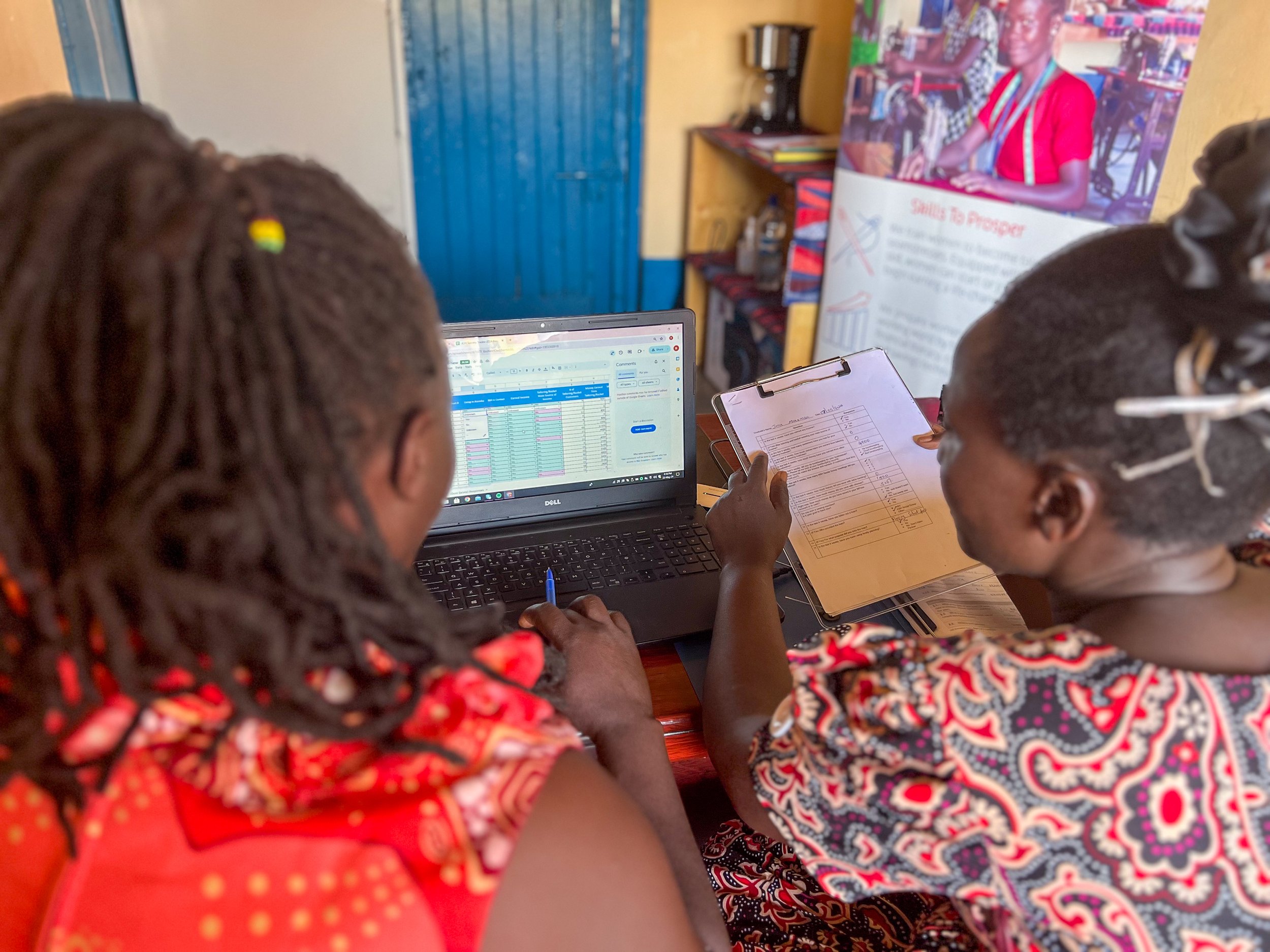
Impact
Tracking Real Change
We don’t just hope our programs work—we measure it.
While many organizations wait years before developing a serious Monitoring & Evaluation system, we built ours from the start. As a small but committed organization, we hold ourselves to a high standard, ensuring our work leads to demonstrable results.
Measuring impact isn’t an afterthought or a box to check—it’s central to our mission and a driving force behind everything we do.
-
What We Measure
Beyond the easy-to-measure outputs—like the number of women trained—we track real outcomes, goals, and long-term impact. We measure economic outcomes such as income levels, employment, and savings behavior. We assess well-being outcomes like agency, confidence, and mental health. We track goals like progress out of poverty, using tangible measures such as housing quality and assets. And we look at long-term impact, including whether graduates’ children can attend and remain in school. Currently, we track school attendance, and as our programs grow, we plan to measure high school graduation rates, a critical milestone in breaking the generational cycle of poverty.
-
How We Measure
To ensure accuracy and depth, we conduct structured, in-person surveys at participants’ homes, allowing for honest responses and direct observation of living conditions. Data is collected at four key points: before training begins, two months after graduation to assess early progress, and at one and two years post-graduation to track long-term impact. We verify financial records through bookkeeping cross-checks and confirm living standards through household observations. Every survey is custom-designed and conducted in the local language to ensure clarity and reliability. We also refine our indicators over time, narrowing them down to the most meaningful and actionable measures of success.
-
Why We Measure
Tracking impact isn’t just about proving success—it’s about ensuring we deliver it. After every M&E survey cycle, our staff analyze the data, identify lessons, and adjust our programs accordingly. If something isn’t working, we refine it. If something is exceeding expectations, we scale it up. We carefully choose what to measure based on a custom-designed logical framework that aligns with our ultimate goals. While we incorporate international best practices, our framework was built around priorities defined by local women and staff, ensuring we track progress in ways that reflect the realities of the community. By combining rigorous data collection with community-driven definitions of success, we operate at a level of thoughtful evaluation that surpasses many much larger organizations.
Increasing Income for Greater Self-Reliance
MONTHLY INCOME
$50
Graduates average monthly income, up from $6 before our program.
EARN INCOME
97%
Graduates earning independent income, up from 33% before our program.
AFFORD BASIC NEEDS
100%
Graduates feel they can buy their basic needs, up from 45% before our program.
Growing Savings to Build Lasting Stability
SAVE REGULARLY
97%
Graduates saving money regularly, up from 17% before our program
BASIC SAVINGS
84%
Graduates have at least 1,000 Ksh in savings, up from 43% before our program.
SAVE PURPOSEFULLY
89%
Graduates saving with a clear financial goal, up from 54% before our program.
Raising Living Standards to Move Beyond Poverty
ADEQUATE HOUSING
89%
Graduates have an adequate home that meets basic living standards, up from 46% before our program.
ADEQUATE STOVE
50%
Graduates cook using a stove rather than an open fire, up from 9% before our program.
CHILDREN IN SCHOOL
100%
Graduates have all their school-aged children attending school, up from 94% before our program.
Enhancing Wellbeing for a Brighter Future
NO PHYSICAL ABUSE
97%
Graduates live free from physical abuse, up from 83% before our program.
NO VERBAL ABUSE
92%
Graduates live free from verbal abuse, up from 74% before our program.
NO DEPRESSION
93%
Graduates show no signs of depression based on a standard mental health screening.
Expanding Agency to Take Control
FAMILY PLANNING
82%
Graduates actively use a family planning method, up from 47% before our program.
AGENCY: INCOME
100%
Graduates have decision-making power over their own income and savings, up from 80% before our program.
AGENCY: CHILDREN
95%
Graduates have decision-making power over key decisions about their children, up from 83% before our program.
AGENCY: PURCHASES
75%
Graduates have decision-making power over major household purchases, up from 34% before our program.
Strengthening Confidence & Social Support
CONFIDENCE
100%
Graduates feel confident expressing themselves in group settings, up from 75% before our program.
EMOTIONAL SUPPORT
74%
Graduates have a support network, with trusted confidants they can turn to for emotional support, up from 10% before our program.
FINANCIAL SUPPORT
95%
Graduates have a support network, with people they can rely on for financial help in emergencies, up from 0% before our program.
About the Data
The data on this page comes from two cohorts of graduates—the classes of 2022 and 2023, each with 20 women. Baseline figures are averages from surveys conducted in December 2021 and December 2022, before training began. These are compared to the most recent follow-up data available: either the one-year follow-up survey from October 2023 (for the 2022 cohort) or a graduate survey conducted in September 2024 (for both cohorts).
As we continue to collect follow-up data from newer cohorts, we will update both the baseline and current statistics to reflect the latest impact.
